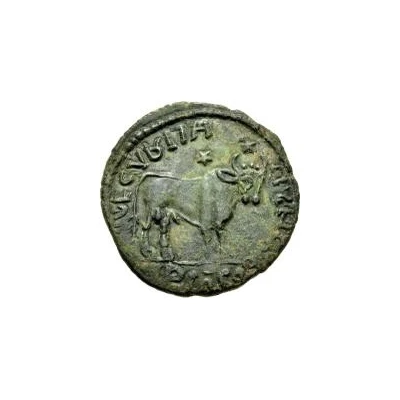


© Numismatik Naumann GmbH
Æ In the name of Julian II; Two stars above bull; bearded bust
| Bronze | 3.99 g | 19 mm |
| Issuer | Uncertain Germanic tribes |
|---|---|
| Type | Standard circulation coin |
| Years | 361-400 |
| Currency | Solidus (circa 301-750) |
| Composition | Bronze |
| Weight | 3.99 g |
| Diameter | 19 mm |
| Shape | Round (irregular) |
| Technique | Hammered |
| Demonetized | Yes |
| Updated | 2024-10-04 |
| Numista | N#165709 |
|---|---|
| Rarity index | 100% |
Reverse
Bull facing left with two stars above, all surrounded by legend.
Script: Latin
Lettering:
SECVRITHITA - IT CEI PVB
PLACD
Translation:
Securitatis Rei-publicae
Security of the state
Edge
Plain
Comment
This type is said to have been struck from the mid- to late-4th century. With Julian II only coming to power in 361, that is the most likely starting date for this type.The denominations of bronze coins that are unknown to numismatists are referred to as Æ (AE), followed by the coin's diameter. The Æ part simply means the coin is made of a base alloy, and because the diameter of these coins is never exactly as intended, different numbers can appear after the Æ for the same type.
The exact lettering of the surrounding legend may vary; while some coins have legible legends, the legends of others may have been reduced to basically only lines.
Interesting fact
One interesting fact about this coin is that it features a bearded bust of Julian II, which was a rare depiction of the emperor during his reign. Most coins from this time period show him with a clean-shaven face. This suggests that the coin may have been minted during a specific time period or for a specific purpose, and its uniqueness makes it a valuable piece for collectors.



